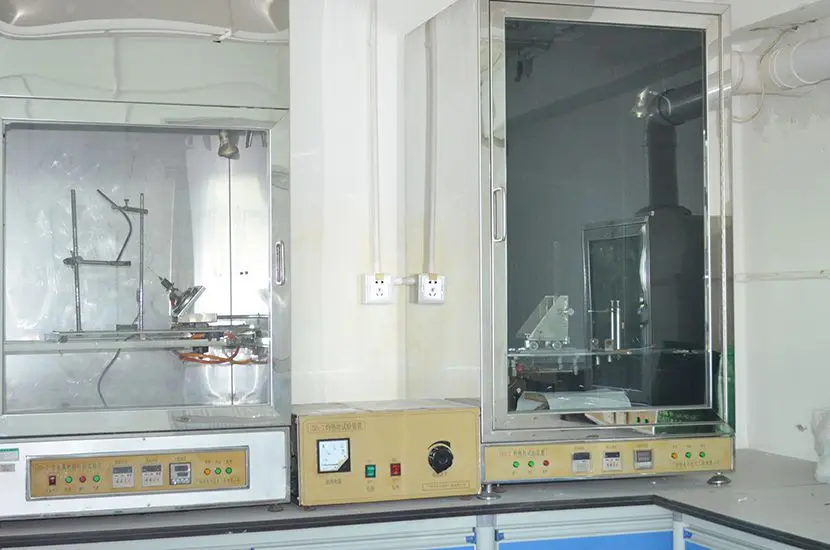
CE Certification for Electronic EN 61000-6-2 EMC Testing
With the continuous advancement of technology and the increasing trend of digitalization in daily life, electronic products have become an indispensable part of our lives. However, the issue of electromagnetic compatibility (EMC) has gradually drawn more attention. To ensure the stability and safety of electronic products, CE certification has become a mandatory requirement for electronic products entering the European market. This article will focus on the EN 61000-6-2 EMC testing procedures as part of the CE certification process for electronic products.
EN 61000-6-2 is an electromagnetic compatibility standard developed by the European Committee for Electrotechnical Standardization (CENELEC). It is part of the EN 61000 series and mainly focuses on testing and evaluating the electromagnetic compatibility of electronic devices in industrial environments.
The EN 61000-6-2 EMC testing procedure consists of several key components:
1. Measurement Equipment and Methods : This section specifies the necessary measurement equipment and methods for conducting EMC tests. For example, electromagnetic field radiation measurement devices are used for radiation testing, and conducted electromagnetic field measurement devices are used for conducted emissions testing. During the measurement process, proper configuration and calibration of the equipment are required to ensure the accuracy and reliability of the results.
2. Electromagnetic Compatibility Testing : EN 61000-6-2 outlines a series of EMC tests, including electromagnetic field radiation tests, conducted emission tests, electrostatic discharge (ESD) tests, and fast transient burst tests. These tests help evaluate the compatibility of the device in different electromagnetic environments, and recommendations for improvements can be made based on the test results.
3. Test Environment : This section specifies the requirements for the test environment needed for EMC testing. The test environment must comply with the conditions stated in the EN 61000-6-2 standard to ensure the reliability and repeatability of the test results. For instance, the level of electromagnetic interference in the test environment should not exceed the specified limits, and conducted interference between test equipment should be minimized.
4. Testing Process and Evaluation of Results : EN 61000-6-2 defines the specific procedures for EMC testing and the criteria for evaluating the results. The testing process should follow the prescribed methods and sequence, with test results being recorded and analyzed. Based on the results, the device's compatibility can be assessed, and it can be determined whether the product meets the requirements for CE certification.
Through the EN 61000-6-2 EMC testing procedure, the electromagnetic compatibility of electronic products in industrial environments can be effectively assessed, enhancing their stability and safety, and ensuring their smooth entry into the European market. Additionally, products that meet CE certification requirements can gain consumer trust and preference, thereby boosting their competitiveness.
In conclusion, the EN 61000-6-2 EMC testing procedure is a crucial step in ensuring the compatibility of electronic products as part of the CE certification process. By following the correct testing methods and procedures and adhering to the standard requirements, manufacturers can effectively protect their devices from electromagnetic interference, ensuring product quality and safety. If you are planning to enter the European market, consider undergoing EN 61000-6-2 EMC testing to ensure your products comply with CE certification requirements and successfully enter the market.
Email:hello@jjrlab.com
Write your message here and send it to us
 Most Reliable Medical Device Test Lab
Most Reliable Medical Device Test Lab
 How to Obtain a Cosmetic Product Safety Report
How to Obtain a Cosmetic Product Safety Report
 US and EU Cosmetics Compliance
US and EU Cosmetics Compliance
 How to Obtain SDS Sheets Certification
How to Obtain SDS Sheets Certification
 Personal Care Products MSDS
Personal Care Products MSDS
 Approval for UL 1727 Introduction
Approval for UL 1727 Introduction
 Candle Label Requirements United States
Candle Label Requirements United States
 Laser Product Qualification Consultants
Laser Product Qualification Consultants
Leave us a message
24-hour online customer service at any time to respond, so that you worry!




